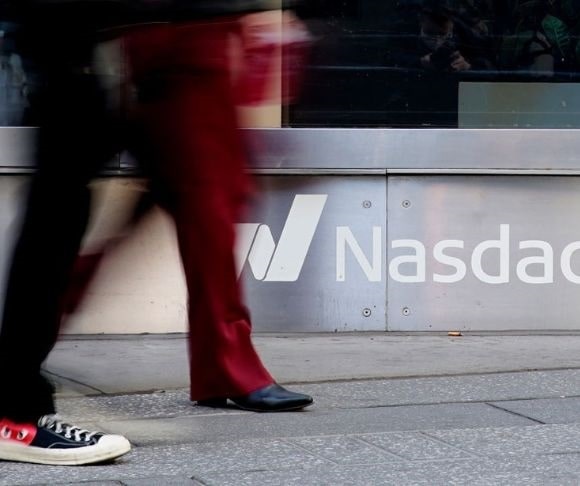The U.S. stock market has been all about making history, as of late, and half the country is raking in the dough from investments in equities, bonds, or metals. In the last month, the Dow Jones Industrial Average topped 29,000 for the first time ever, the S&P 500 reached a record high 3,205, and the Nasdaq settled at an all-time high of 9,200. All this happened even with the U.S.-Iran conflict, political turmoil in Washington, some slight trade uncertainty, and, lingering in the background, Prince Harry triggering an enormous amount of consternation by announcing he is taking a leave of absence from the royal family. This leads to the ultimate question: Can this bull run be for real?
Two Bulls Talk at a Party
Are the fundamentals of the stock market sound or is everything overvalued? It can be a difficult question to answer. Central bank intervention and manipulation, a president wielding his laser pointer to make everyone look like a bunch of feline critters, and euphoric investors just hitting the buy button on everything – this is the day in the life of someone working on the New York Stock Exchange.
 Before diving into the key performance indicators, it is important to first understand what determines stock prices. They adhere to the laws of supply and demand and marginal option – least optimistic current owner and most optimistic non-owner contribute to the final and actual share price.
Before diving into the key performance indicators, it is important to first understand what determines stock prices. They adhere to the laws of supply and demand and marginal option – least optimistic current owner and most optimistic non-owner contribute to the final and actual share price.
It is expected that 2020 will produce overall modest gains that will likely fall short of last year’s triumph. This belief on The Street is driven by concerns of overvaluation. Are these worries legitimate?
A common measurement that analysts look at is the price-to-earnings (P/E) ratio. This measures the price of a single share of stock to one year of per-share earnings. If a business is reporting basic earnings per share of $5 and the stock is selling for $25 a share, the P/E ratio is 5. While possessing a higher P/E indicates that investors are bullish, it could also signal that the stock is overvalued.
Here are the P/E ratios of the three leading indexes and their averages over the last 10 years:
- Dow Jones: 21.46 (17.5)
- S&P 500: 24.47 (20.7)
- Nasdaq: 21.60 (15.05)
There are a few other earnings assessments to consider, including the price to sales and median price to earnings. The former tops its performance from the peaks in 2000 and 2007 and the latter suggests the S&P 500 is overvalued by around 30%. It should be pointed out that corporate buybacks, which remove shares from the open market, could be inflating earnings. This means that the S&P 500 could be overvalued by as much as 80%.
You could also examine the so-called Buffett Indicator, which looks at the total value of the stock market compared to the nation’s gross domestic product. The conclusion? Valuations are in bubbles bigger than prior to the dot-com crash and the market meltdown. Ditto for global financial markets.
Then, of course, there is sentiment. A recent Deloitte study found that 77% of chief financial officers (CFOs) believe the stock market is overvalued, but just 3% anticipate a recession, though they do expect a slowdown. To be fair, this has been the thought for the last few years. A Bank of America Merrill Lynch (BAML) 2017 survey of investors reported that 81% of investors think the U.S. market is overvalued. And yet, here we are.
This Time It’s Different – Pinky Swear
How many times have you heard “this time it’s different” during bull markets? Whether it was during the dot-com surge or the housing bubble, there was always a plentiful supply of men and women appearing on business news networks to spout this drivel. Yet, the ending turned out to be the same: A day of reckoning.

(Photo by John Smith/VIEWpress)
What about this 126-month expansion? Is it the one that is truly different, this time? Perhaps, but for entirely different reasons – and they are not good either.
Prior to the dot-com and housing crashes, interest rates hovered around 6%; historically, rates have averaged 5.2%. Today, they are under 2%, and they could come down even more over the next year or two if the Federal Reserve perceives weakness in the economy.
While the money supply expanded during the boom phases of the business cycle, the M2 money stock has more than doubled since the Great Recession. With the central bank tapering the taper, bailing out repo markets, purchasing Treasurys, and launching another round of quantitative easing (do not call it QE4!), the balance sheet is expanding again. In other words, the money supply will keep getting bigger for the foreseeable future.
Debt is another huge factor for this bull market. Nonfinancial corporate liabilities are the biggest they have ever been. Even during the previous expansion, corporate debt was relatively stagnant. Thanks to a low-rate environment, companies have taken on more debt than they could possibly handle.
Burst Your Bubble
It is impossible to predict when the market bubble will burst. It is safe to say that, barring a quasar or an asteroid on our path, a market meltdown that erases all the gains generated over the last decade is not on the horizon. The money supply is still expanding, the Fed is prepared to slash rates, and there is always fiscal policy from President Donald Trump and the Republicans. For the time being, investors are scooping up expensive stocks in the hope that they will travel even higher, which is just another form of gambling. Once the Fed spigot of easy money is turned off that is when a financial crash takes place.
~
Read more from Andrew Moran.




